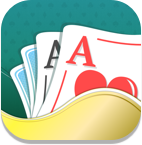Undo
Redo
Delete
Notes
Hint
Leaderboard is empty.
Be the first to complete this Sudoku!
Play Sudoku Online
Get set, relax, and prepare to challenge your brain with this number-placement puzzle anywhere and anytime. Start by choosing any of the four different levels of difficulty:
The harder the level, the fewer allocated numbers at the beginning of the puzzle.
Beginners can start by choosing the easy level to get acquainted with the digits, the grid, and the rules of the puzzle. If you feel confident in your skills from the beginning, you can put them to the test with the medium level and face demanding challenges right from the start. Experts and pros can also have their fun and enjoy playing with the numbers and possibilities with the hard and evil levels.
Time is not a constraint, and only logic is necessary. Don’t rush; analyze all your possibilities and slowly work your way to fill the grid. Let the cogs in your brain spin and enjoy this relaxing yet challenging puzzle.
What is Sudoku?
Sudoku is a number-placement puzzle widely popular around the world, credited with helping to keep the brain active and healthy.
The basis of the game originated in Switzerland in the 18th century when the mathematician Leonhard Euler developed the concept of Latin Squares used in statistical analysis. The modern Sudoku as we know it today, however, using digits instead of the Latin alphabet, was most likely the creation of Howard Garns, an architect from Indiana who first published his version of the game in the Dell Magazines in 1979.
Its widespread popularity didn’t come until the game reached Japan in 1984 when Nikoli published it under the name “Suuji wa dokushin ni kaguru” (The numbers must remain single) in the Monthly Nikolist Magazine. Nikoli also introduced two new rules that became essential to the game as we know it today. The first was the concept of symmetry. The given numbers at the beginning must create a pattern in their allocated squares to make the game more visually appealing to the players. The second and most important rule is that no more than 32 numbers out of the 81 can be given away, as the goal becomes too easy to reach above this threshold. As the game’s popularity increased in Japan, its designation was eventually shortened to include only the characters for number (数 - Su) and single (独 - Doku), resulting in the name by which we now know it, Sudoku.
Nikoli’s sudoku version later spread throughout the world thanks to Wayne Gould, a retired Hong Kong judge who first encountered the game in a Tokyo bookstore and later published a book with his own puzzles in the UK and the US. Later, newspapers all over the world started including these games in their publications.
Is Sudoku and Killer Sudoku the same?
No, Killer Sudoku is a variant of the traditional number puzzle.
As the popularity of Sudoku puzzles soared worldwide, a new phenomenon took place: variants. These are classic Sudoku puzzles that have undergone a few changes to expand the logical potential of the game. The most famous of these variants is Killer Sudoku, a puzzle that adds the concepts of cages and sums to the challenge. The rules of traditional Sudoku still apply, but additional constraints are also involved. Other popular variants include Samurai Sudoku and Mini Sudoku for kids.
How to play Sudoku
Sudoku is played on a 9 x 9 grid, divided into 3 x 3 squares separated from each other by thicker lines. The goal of the game is to fill each cell with a number from 1 to 9, making sure there are no repeated digits in any column or row in the grid or within the square itself.
The game starts with the grid partially filled, and the player must find the remaining numbers based on the position of those already given. The difficulty of the puzzle varies according to the number of filled cells at the beginning of each game.
Sudoku Tips
Naked singles

Hidden singles

Naked pairs

Hidden Pairs

They are called hidden pairs because there might be other candidates for the same cells, which can make them hard to spot.
Naked Triples

For example, if you have the combination of 6/8 – 8/4 – 6/4 in the same row, you know that these 3 digits will be in that row regardless of their right placement. You can then eliminate these numbers from your pencil notes on the remaining rows of their square.
Unlocking possibilities

Don’t try to guess

Keep your grid clean

Practice makes perfect

A beginner challenge that once looked anything but easy can turn ridiculously quick to solve after just a few puzzles.
Sudoku is such a simple and yet popular game precisely because it is a battle against oneself and you can experience the results of your training firsthand.
Sudoku Puzzle Solving Strategies
Crosshatching
Focus on each square at a time. Compare the missing numbers with those on the rows and columns of the grid that reach the square. If they contain any of the missing numbers, you can eliminate the blank cells in the square from that row or column.
Counting
Count the numbers in each row to find the missing ones. Repeat the process for each column. Cross the likelihood of each number’s position with the contents of the square to increase probabilities or to find the right answer.
The certainty of the uncertain
Even when the placement of a number is not certain, you can sometimes determine that it will be without a doubt positioned in a certain row or column. Take note of that position and use it to eliminate other possibilities in the squares connected to that column or row in the grid.
The X-Wing method
This strategy is normally used in the hardest levels of Sudoku. The goal is to eliminate possibilities (pencil notes). You can use it when you have the same candidate in 4 spots that form a square or a rectangle when connected by row and column. If you connect each of the extremities, you discover that one of those pairs will be the correct one in the end. If you test either of the possibilities, you might be able to eliminate the digit being analyzed from other pencil notes in different cells.
The Swordfish method
To apply this method, you must have 2 identical candidates in the same row, in three different rows. These candidates must also be connected by column, regardless of the shape they create.
When you connect the different possibilities, you should have a closed chain. In the end, you will have only two sets of possible answers. You can then test these sets and eliminate the digit you are working with from any cell that becomes impossible under the two possibilities.
The Jellyfish method
The Jellyfish is an upgraded combination of the Swordfish and the X-Wing methods. In this case, you must have the same candidate in four columns in only four different rows. Connect the cells to discover the sets of units that could come out of the different possibilities. The candidates that become impossible when any of the sets are tested can be eliminated.
Sudoku Solver
When all strategies and tips fail, there is only one sure way to avoid frustration or losing interest in these number puzzles: using a Sudoku Solver.
This tool helps you solve any Sudoku grid, including those from printed sources like your local newspaper. Simply enter the numbers from the pre-filled cells of the puzzle into an empty grid and press "solve." The results are instant.
If the grid is invalid due to an error or contains multiple solutions, a warning message will be displayed. In the case of multiple solutions, examples of the possible solutions will also be provided.
Check our latest articles
Cages and their sums are the defining features of Killer Sudoku. They are what make …
The 45-rule is one of the most basic Sudoku strategies but its usefulness and importance …





















